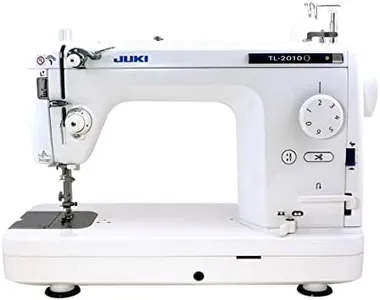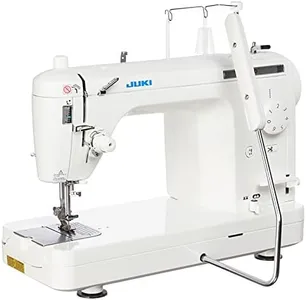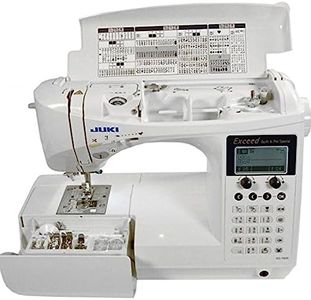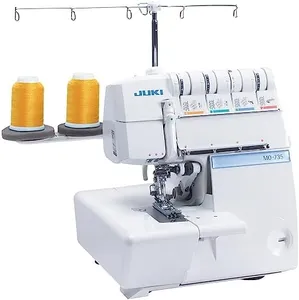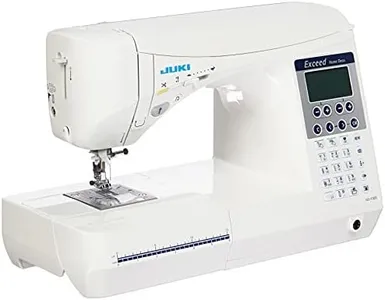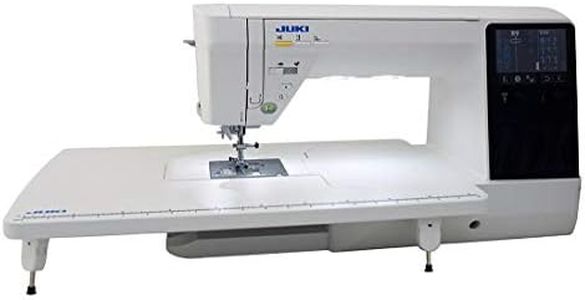We Use CookiesWe use cookies to enhance the security, performance,
functionality and for analytical and promotional activities. By continuing to browse this site you
are agreeing to our privacy policy
9 Best Juki Sewing Machines
From leading brands and best sellers available on the web.Recommended lists
Buying Guide for the Best Juki Sewing Machines
Choosing the right Juki sewing machine can make a big difference in your sewing experience, whether you’re a beginner or an experienced sewist. The key is to think about what types of projects you plan to work on, how often you’ll use the machine, and which features will make your sewing easier and more enjoyable. By understanding the main specifications, you can match your needs to the right machine and avoid paying for features you won’t use or missing out on ones you’ll need.Stitch Types and NumberStitch types refer to the different patterns a sewing machine can create, such as straight, zigzag, buttonhole, and decorative stitches. The number of stitch types is important because it determines the variety of projects you can tackle. Basic machines may offer just a few essential stitches, which are perfect for simple repairs or basic garment construction. More advanced machines provide a wide range of stitches, which are useful for decorative work, quilting, or specialized sewing. If you mostly sew simple items, a machine with fewer stitches will suffice. If you enjoy experimenting or plan to sew a variety of projects, look for a machine with more stitch options.
Mechanical vs. ComputerizedThis refers to how the sewing machine operates and how you select settings. Mechanical machines use manual dials and levers, making them straightforward and often more durable, which is great for beginners or those who prefer simplicity. Computerized machines use digital controls and often have features like automatic stitch selection, memory functions, and even touchscreens. These are ideal for users who want more convenience, precision, and advanced features. Consider your comfort with technology and whether you want a simple or feature-rich experience when choosing between these types.
Sewing Speed (Stitches Per Minute)Sewing speed is measured in stitches per minute (SPM) and indicates how fast the machine can sew. Higher speeds are useful for large projects or professional use, allowing you to complete work more quickly. Lower speeds are easier to control, which is helpful for beginners or for detailed work. If you’re new to sewing or do a lot of intricate work, a machine with adjustable speed or a lower maximum speed is a good choice. If you sew frequently or work on big projects, a higher speed machine can save you time.
Automatic FeaturesAutomatic features include things like automatic needle threading, thread cutting, and buttonhole making. These features make sewing easier and faster by reducing manual steps. For example, automatic needle threading saves time and frustration, especially if you have trouble seeing small details. Automatic buttonhole functions ensure consistent results without much effort. If you value convenience or want to make sewing as easy as possible, look for machines with more automatic features. If you prefer to do things manually or want to keep things simple, fewer automatic features may be better.
Feed SystemThe feed system moves the fabric under the needle as you sew. A good feed system ensures even stitching and helps handle different fabric types, from lightweight to heavy materials. Some machines have advanced feed systems that can handle thick fabrics or multiple layers, which is important for quilting or sewing heavy-duty items. If you plan to sew a variety of fabrics or do quilting, look for a machine with a strong or adjustable feed system. For basic sewing on standard fabrics, a standard feed system will work well.
Free Arm CapabilityA free arm is a removable part of the sewing surface that allows you to sew cylindrical items like sleeves, cuffs, and pant legs more easily. This feature is important if you plan to sew clothing or work on projects that require sewing in tight spaces. If you mostly sew flat items like quilts or home décor, a free arm may not be as important. Consider the types of projects you’ll do most often to decide if this feature is necessary for you.
Build Quality and WeightBuild quality refers to how sturdy and durable the sewing machine is, often influenced by the materials used in its construction. Heavier machines with metal frames tend to be more stable and last longer, which is important if you sew frequently or work with heavy fabrics. Lighter machines are easier to move and store, making them a good choice for occasional use or if you need to transport your machine. Think about where and how you’ll use your machine to decide which build quality and weight are best for you.

